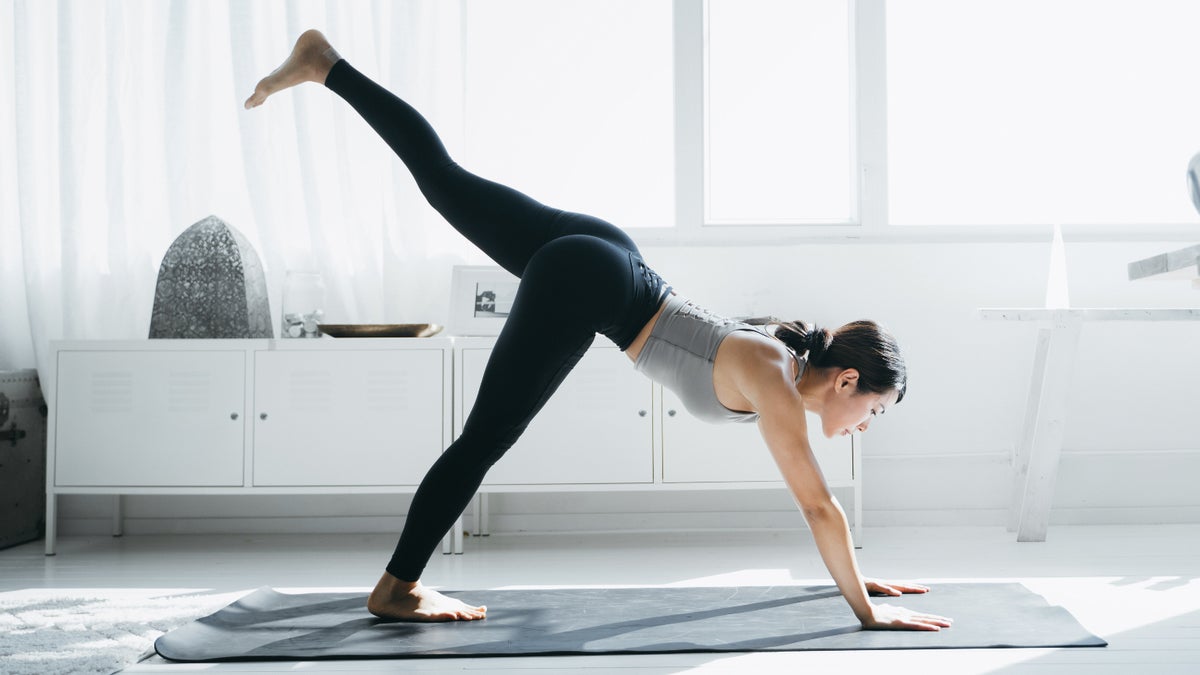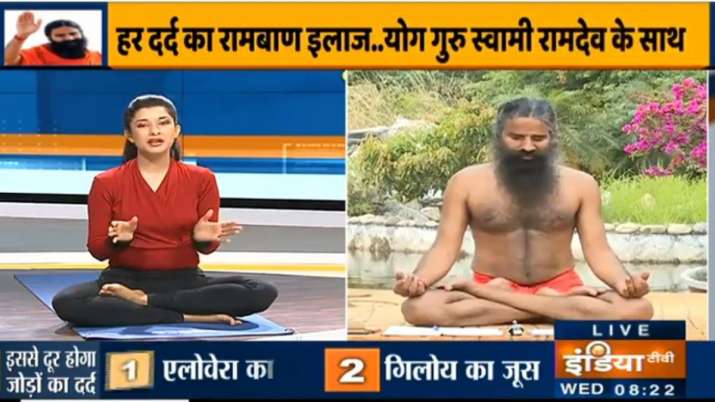
One of the most basic yoga poses for beginners is the standing leg raise. Stand with your feet hip-width apart and extend your arms out to the sides. Reach one hand to the sky, looking up at your fingertips. Hold both hands at shoulder-width apart. The pose is beneficial for your back, thighs, and hamstrings, while toning your legs and building core strength. It takes six to eight repetitions to master this position.
The staff pose is a seated version the mountain pose. It helps beginners to learn the proper alignment principles for the seated positions. To perform this asana, you need to engage your leg muscles and lift your chest, while relaxing your shoulders. This will allow you relax your shoulders and create a slight bend in the knee. You can also alter the position by placing an object on top your knees.
The downward-facing dog is a wonderful way to end a session of yoga. If you are just beginning, this pose can be a great place for you to start. It is important to keep your hips raised and to stretch your legs towards the floor. While you don't need your heels to touch the floor it will stretch your outer hips. You can ease the process by bending your knees and keeping your hips parallel.

The corpse poses is a great choice for transition poses. It can be difficult to bring your body into a still state, but it becomes easier as you practice. To get the most out of your practice, give yourself plenty of time and dedicate a few minutes each day to reviewing your posture. Regular practice of yoga will help you to see the physical and mental benefits. Daily yoga practice has many benefits.
The triangle pose is one of the most popular poses for beginners. It strengthens the chest muscles and hamstrings. It is a good starting point in any yoga practice. Aside from the triangle pose, the Seated Spinal Twist is another popular yoga pose for beginners. This stretch strengthens the legs, and stretches the spine. It can also be used to strengthen the back.
The twist pose is a good introduction to the twists in yoga. The twists increase the length of the bottom leg and reduce back tension. This pose can be challenging if you have back pain. However, it will strengthen your legs and build your back. This is a good exercise for beginners. If you are unsure where to start, the child's position is a good place to start. Once you learn the cat, you'll be able to do it in any position.
For beginners, the forward bend is a great pose. This is a general stretch that helps to stretch the hamstrings, calf muscles and hips. One of the most basic yoga poses, the bridge, should be your focus during a yoga session. This will improve your flexibility and balance. It can be difficult for someone who isn't well-versed in yoga. You'll be able to practice the pose with a teacher.

Beginners should learn to do the child's position. It will help you get a good base of strength and improve your body positioning. Many of the poses in yoga for beginners can be used together. So it's essential to start with the foundational ones so you can build your way to more advanced positions. Keep practicing! Remember that these poses are not for beginners. These can be altered to suit your needs.
A popular beginner yoga position is the downward dog. This pose is meant to strengthen the back. To make this pose easier, you need to stretch the thighs and shoulders. Then, bend the arms at the sides and release them. The pose should be held for no less than thirty seconds. To improve your movement, you can try different versions of the pose. Then, practice the poses for beginners until you master them all.
FAQ
What is the purpose of milk for men?
The next time you buy milk, think about what else you could use it for. It might also help if you start drinking less coffee.
The benefits of milk have been demonstrated to be both beneficial to children and adults. Milk is rich in nutrients for children, including vitamin D and calcium.
It also aids digestion, improves bone strength, and promotes weight gain. The immune system is stronger and there are fewer illnesses in adults who consume dairy products.
The lactose in milk is also high, so people with digestive problems can enjoy the benefits of milk without experiencing stomach discomfort.
Drink more milk than soda and juice. The extra calcium and vitamin D found in milk can help strengthen your teeth and bones.
If you don't like the taste of milk, you can always make your yogurt using plain low-fat milk. Yogurt has lower calories and is richer in protein than milk.
Yogurt also has probiotics that aid digestion and increase immunity.
Try warm milk to help you fall asleep. Warm milk can relax muscles and increase serotonin levels. This will help you sleep well.
How many times a week should I exercise?
It depends on how much time you have available and what type of exercise you prefer. The general rule of thumb is to exercise aerobically 3 - 5 days per week. It is important to not overdo it. To get the best results from your exercise, it is important to be consistent.
Which exercises are best for me?
It really depends on the type of fitness goal you have. Some people concentrate on endurance activities such running, cycling, swimming. Others enjoy lifting weights or using resistance bands. There are so many different types of exercise programs available today. You can choose the one that best suits you.
Is there any benefit to doing yoga?
Yoga has existed since ancient times. It has only recently been more popular. Yoga is now very fashionable among celebrities and everyday people who want to look and feel good.
Yoga is great for strengthening and stretching your muscles. It also relaxes your mind and makes you calmer.
The primary difference between yoga and other forms is the focus on breathing techniques in yoga.
Practice a variety of poses to increase your flexibility and balance.
Statistics
- Get free shipping and 25% off today. (healthline.com)
- An estimated calorie range for moderately active adult males falls between 2,200 to 2,800 calories per day, depending on age. (eatright.org)
- 10 pounds in a month is likely during a lean bulking phase, especially for beginners. (muscleandstrength.com)
- The PRS enabled risk stratification for overall prostate cancer and lethal disease with a four-fold difference between men in the highest and lowest quartiles (HR, 4.32; 95% confidence interval [CI], 3.16-5.89). (pubmed.ncbi.nlm.nih.gov)
- Candidates and applicants must pass all four tests at 70% (minimum level) to graduate from Basic Deputy U.S. Marshal (BDUSM) Training. (usmarshals.gov)
External Links
How To
How does a man become fit in just 30 days?
Breaking down fitness goals into manageable steps will help you reach your fitness goals.
Every day, you must work towards your goal. This could include anything from 10 pushups that last 5 minutes to running 3km.
If you do this consistently over time, you will see positive results.
Here, consistency is the key. You must persevere until your success is achieved.
What is the difference in Aerobic Fitness and Anaerobic Fitness
Anaerobic fitness means that our bodies can perform intense physical work with no oxygen. Anaerobic pathways are used when there is intense exercise to provide sufficient energy. Anaerobic pathways include glycolysis (creatine phosphate), the phosphagen and lactic acid.
Contrary to that, aerobic fitness is the ability to sustain low-intensity exercises for a long time. When performing aerobic exercises oxygen is used to fuel the cells. In other terms, the aerobic pathway has more energy that the anaerobic.
To run a marathon you need to first increase your aerobic capacity. You won't be successful if you focus only on your anaerobic ability.
Aerobic fitness also refers to cardiovascular fitness. The two most common methods of measuring cardiovascular fitness are VO2 max testing and step tests.
VO2 Max Testing
VO2max is the maximum oxygen (O2) that your body can use while exercising. This test determines how much O2 your body can use during exercise.
This test can measure your cardiovascular fitness accurately. However, the test can only be administered by highly trained professionals and requires expensive equipment.
Step Tests
Step tests can be used to assess cardiovascular fitness. They are easy and effective. These are based on your weight and age, they require you to run or walk on a track.
These tests are easy, inexpensive, and accessible almost anywhere. You could, for instance, run on a treadmill for two minutes, rest for one minute, and then go back to the starting point for 20 minutes. You should maintain a constant heart rate throughout the session.
This protocol is called the "Bruce Protocol". Bruce, a runner, developed this protocol after realizing that his heart rate did not rise when he ran longer distances.